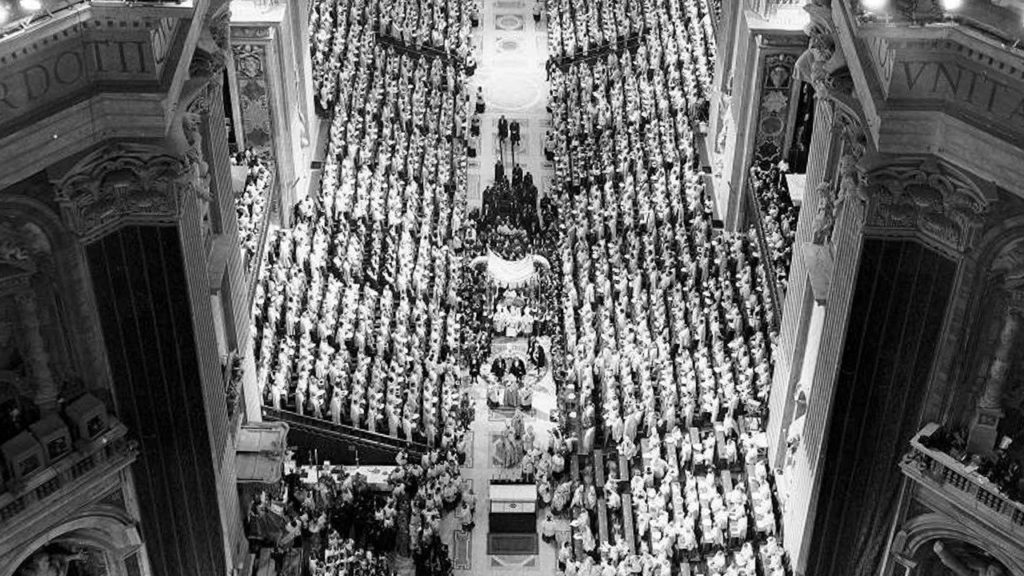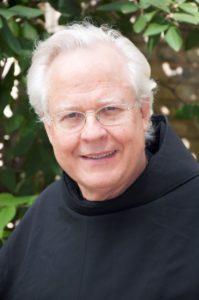CAN I KNOW TRUTH?
 (Part Eight: SIXTIETH ANNIVERSARY OF THE SECOND VATICAN ECUMENICAL COUNCIL)
(Part Eight: SIXTIETH ANNIVERSARY OF THE SECOND VATICAN ECUMENICAL COUNCIL)
12 Days on Pilgrimage in August
“I am the way, and the truth, and the life” (Jn. 14:6).
Our Marian Franciscan Pilgrimage brought us to Germany. This reflection is to aid Catholics beyond Germany about the “Synodal Path” of Pope Francis. In sum, on 21 July 2022, a “Declaration of the Holy See” to the Catholics in Germany, clarified that it would not be licit “to initiate in the dioceses, before an agreement at the level of the universal Church, official new structures or doctrines, which would represent a wound to ecclesial communion and a threat to the unity of the Church.”[1] The modality of Vatican II has an optic to help resolve the contours.
On 11 October 1962, Pope St. John XXIII opened the Council beside St. Peter’s tomb: “Mother Church rejoices that, by the singular gift of Divine Providence, … under the auspices of the virgin Mother of God, …. The magisterium (teaching authority) is unfailing and perdures until the end of time. Christ is the center of history. For two thousand years the great problem remains, i.e. people are either with Him and His Church or without Him. Some deliberately oppose His Church and give rise to confusion. History is the teacher of life. Prophets of gloom had not learned from history. He lamented for the bishops who were absent because they were imprisoned for their faithfulness to Christ.[2]
“The greatest concern of the Ecumenical Council is this: that the sacred deposit of Christian doctrine should be guarded and taught more efficaciously. …The Christian, Catholic, and apostolic spirit of the whole world expects a step forward towards a doctrinal penetration and a formation of consciousness in faithful and perfect conformity to the authentic doctrine, which, however, should be studied and explored through the methods of research and through literary forms of thought. The substance of the ancient doctrine of the deposit of faith is one thing, and the way in which it is presented is another.”
“The truth of the Lord will remain forever. …Often errors vanish as quickly as they arise, like fog before the sun. The Spouse of Christ prefers to make use of the medicine of mercy rather than that of severity … to meet the needs of the present day by demonstrating the validity of her teaching rather than condemnations. Fallacious teaching, opinions and dangerous concepts… contrast honesty and have produced lethal fruits, that it would seem humanity is inclined to condemn. The Catholic Church has the great duty to work actively so that there may be fulfilled the great mystery of that unity, which Jesus Christ invoked with fervent prayer from His heavenly Father. The mystery of unity animates those who follow non-Christian religions.”
Recall the plan for the Council brought a complex of problems to the center of theological questioning. Long gone is the shift to catholic from focus on Roman at Vatican I (1869-1870). Pope John set out to bring a shift of attention to catholic. The Council began to rebuild a dialogical and fraternal Church imbued with Charity in Truth [3] for the development of every person and of all humanity. The Church’s successes and failures are perforated, not a secret. Pope Francis’ vision of “synodality” requires listening to the Holy Spirit and the Gospel. The credibility of Church authority, including papal authority, Christian anthropology and sexual morality, and the reliability of Scripture are always in the center of theological questioning.
From Pope John, Vatican II, to Pope Francis the Church has never lost sight that her inmost nature is communio, a sharing of and fellowship in the body of the Lord. Developments may have appeared to, yet never contradicted what has been constant in the doctrine taught by the Church before and since John XXIII opened the Council. The Council analyzed Tradition as never a simple and anonymous handing on of teaching, but as linked to a person, a living word, with a concrete reality in faith. Successio and traditio were originally neighboring terms, practically synonymous. Succession is never the taking over of some official powers that are then at the fancy of the office bearer. The official powers are at the service of the word. The person with the office testifies to what has been entrusted. Official power overshadows the bearer, who fades into the background.
In the second century, the anti-Gnostic polemics challenged the purpose of succession. Gnostics contrasted the true apostolic tradition of the Church with the pseudo-apostolic tradition of Gnosis (knowledge). They taught secret information as part of a secret tradition passed down from the apostles. A line can be traced to the communities in which the apostles themselves had been at work or had received letters from the apostles.The head of the community now traces his spiritual ancestors. If there could be any knowledge anywhere of the oral heritage from the apostles, it is found in these apostolic communities. Succession is equal to tradition. Succession holds fast to the apostolic word. Tradition continues the existence of authorized witnesses. The reality of the Word of God and the reality based upon it always makes use of human circumstances to express itself in the community.[4] Hence, Gnostic secret information and traditions (plural) has a Catholic answer: traditio. Tradition is singular.
Peter and the apostles were to preach the word. Sixty years after the start of Vatican II, anxiety in relation to the future seems more pervasive in the West. [5] Agree? Kierkegaard, in a Protestant tradition, saw anxiety everywhere with no exception. His deep reflection is on the demonic as unfreedom that wants to close itself off, which is impossible. Anxiety manifests itself when there is contact with the good. Inclosing reserve is silence. A person will not say what needs to be said. In reply, knowledge of truth-filled love moves Christians from silence.
Fr. Ed Ondrako, OFM Conv. Univ. of Notre Dame eondrako@alumni.nd.edu
___________________
[1] “Declaration of the Holy See,” Vatican Press Office, 21 July 2022
[2] Examples: we visited the Czech Republic, St. Vitus Cathedral, Prague, where Joseph Cardinal Beran is buried. He was only allowed to attend the Council after 1964. We visited the Slovak Republic where Jan Chrysostom Cardinal Korec, Nitra, Slovakia, was imprisoned until 1969 when the Vatican succeeded in having him released. When he met Pope Paul, the Holy Father wept and gave him his ring and crosier.
[3] Pope Benedict XVI, Caritas in Veritate (Encyclical on Integral Human Development, 29 June 2009)
[4] Pope Benedict XVI, God’s Word (San Francisco: Ignatius Press, 2008), 20-22.
[5] S. Kierkegaard, The Concept of Anxiety ( Princeton: Princeton University Press, 1980), 111 – 162. His psychological treatment is a rebelling against the appropriation of Hegel in Danish Lutheranism.
Fr. Edward J. Ondrako, OFM Conventual
Research Fellow Pontifical Faculty of St. Bonaventure, Rome
Visiting Scholar, McGrath Institute for Church Life
University of Notre Dame
October 12, 2022
